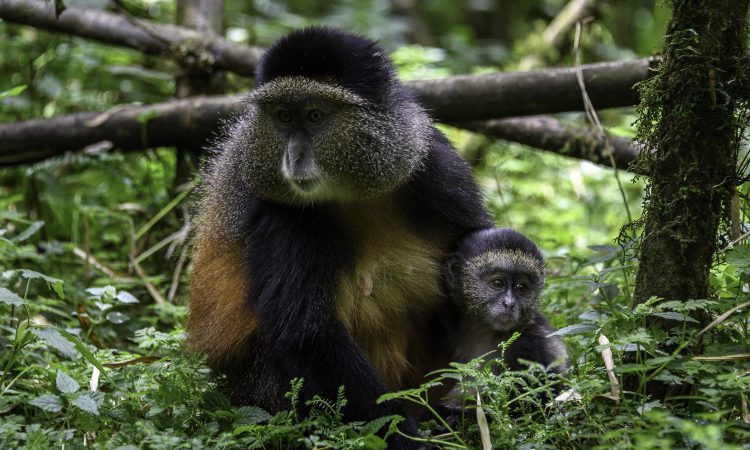Gishwati-Mukura national park is a composition of 2 montane rainforest reserves that make up Rwanda’s 4th and newest National Park called Gishwati-Mukura national park. The Gishwati and Mukura montane forests are found South of Volcanoes National Park, in the western province of Rwanda, located within close proximity to the legendary Lake Kivu.
Gishwati Forest, a secondary montane forest was untouched since 1978 till 1986 when most of it was cleared by refugees to create space for settlement and farming following a civil unrest. This natural forest forms part of the Congo-Nile divide forest sector which also extends to cover the Nyungwe Forest National Park in the South-western province as well as Burundi’s Kibira National Park. It is an isolated montane forest and it makes up the Northern section of Gishwati-Mukura National Park.
Gishwati also spreads covering 4 sectors of Rutsiro district; the Nyabirasi, Ruhango, Mushonyi and Kigeyo. As of the 2007, these sectors have a population of about 85428 with 430 people living per sq.km. Rutsiro communities depend largely on subsistence farming.
By 2001, there was a small patch of Gishwati left covering up to only 6.1 Sq. Km. Due to deforestation, most of its biodiversity was lost and other environmental effects such as degradation, landslides, erosion etc. were severely experienced. Its size later increased to 10sq.kms following efforts to restore it and adjacent to it, there are extensive tea estates.
Gishwati – Mukura National Park & its biodiversity.
A record of about 99.7% decline in faunal species was experienced at Gishwati Forest and this included its floral species. 93.3% decline represented the wild fruits, 99.6% the wild vegetation and 79.9% medicinal plants. 58 species of trees, shrubs consisting of hardwood and bamboo make up the Gishwati Forest cover.
There are also about 4 species of primates living within this natural forest reserve including L’Hoest’s monkeys, black and white colobus monkeys, blue monkeys, chimpanzees and golden monkeys. It is an important birding area, inhabiting up to 84 species of birds including the white-headed wood hoopoe, mountain yellow warblers and more. In addition, the natural forest hosts many amphibian and reptile species.
Mukura Forest Reserve – a natural forest that is found Northwest of Rwanda and spreads to cover the land area of 1,987.74 hectares. Originally, it covered over 300sq.km but it drastically reduced as a result of deforestation.
Mukura was recognized as forest reserve in 1951 and Gishwati-Mukura National Park in 2015. The Gishwati-Mukura landscape is currently one of Africa’s few designated UNESCO Heritage site and in Rwanda, the other heritage site is Volcanoes National Park.
Getting there
Getting to Gishwati-Mukura National Park from Kigali capital is easier on road and you only require 2-3 hours to drive. For guests who set off from Kibuye, your drive journey takes 1 hour.
You can also connect from the Northern route linking to Karongi district, then to Mukaga and finally to Gishwati-Mukura Forest. Or make the best use of a boat ride on Lake Kivu, crossing to Gishwati-Mukura from D.R. Congo side. Lake Kivu is one of Africa’s biggest fresh water lakes and it is shared between Rwanda and Congo.








